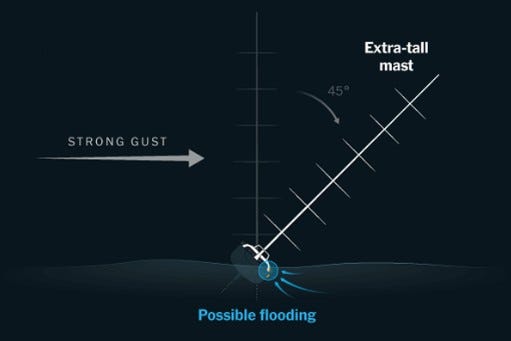How Our Bayesian Coverage Helped Lead the 'Times' To a Damning Conclusion
Major News Story Emphasizes Design Issues, Particularly That Darn Mast
In an extraordinary effort, The New York Times has made the case that blame for the Bayesian disaster was not so much crew error—as alleged by the builder—but a massive design flaw that begat other design flaws.
You guessed it: The root of all evil was the boat’s 237-foot aluminum mast.
“The sheer size of the Bayesian’s ma…


